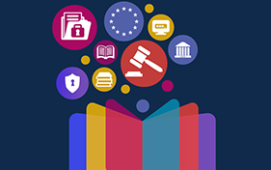
Ensuring financial services’ firms marketing messages accurately reflect what’s really on offer has long been a challenge for compliance professionals. And with other areas of the business attracting substantial and highly public penalties from regulators, the danger was that this function didn’t get the attention it deserved.
But regulators are starting to pay more attention, and that means compliance teams need to as well. Back in December 2, FINRA sanctioned four firms – M1 Finance LLC, Open to the Public Investing, SoFi Securities and SogoTrade – for advertising related transgressions. Their fines – though small compared with recent six-figure penalties for trade surveillance breaches – included over $1 million in restitution to customers enrolled in securities lending programs and $1.6 million for the firms’ related supervisory and advertising violations.
Vall Herard, CEO at Saifr, which was sprung out of Fidelity Labs a few years ago, reckons his firm can help firms avoid such censure by making 10-fold improvements in their marketing content and communications compliance activities.
Launched in 2020, Saifr drew upon its founders’ deep pool of institutional knowledge about content creation and compliance with tens of millions of compliance review data points to train proprietary AI models to power their solutions. Today, Saifr fields a global team of experts in compliance, technology, AI, natural language processing, and user design including former staff attorneys at the SEC and FINRA.
The Saifr solution comprises two products, each addressing specific compliance use cases. The first is focused on marketing compliance and includes an add-in function for content creators to get real-time feedback as they’re developing content along with a workflow collaboration tool to monitor and manage the authorization process. The second focuses on adverse media search and Customer Identification as part of KYC.
“The Saifr value proposition is that we are reducing friction in the compliance process,” says Herard. “From our observations at certain institutions, it can take two days for a single page of content to work through the compliance review process, at other firms, it might take up to a month. For a typical 20-page thought leadership piece, a trained compliance professional can review it in about five to seven minutes per page, highlighting issues that could pose a regulatory challenge. Using Saifr, that document can be uploaded, scanned, highlighted for potential non-compliant sentences/phrases, and get recommended disclosures in less than 10 seconds. So, we’re able to eliminate a lot of the friction in the process and allow companies to get more compliant content out to market much, much faster.”
Herard continues: “I’ve talked many times about the importance of embedding a risk culture, into organizations. The Saifr solution is the manifestation of that. It’s the idea that anyone who’s writing anything that is going outside the firm that could potentially be misleading needs a check. Saifr can catch risks upfront before it hits the public.”
SaifrScan acts as a ‘compliance coach’. Saifr’s AI scans a piece of text or an image and highlights potential compliance risks. It also provides a call-out with an explanation for why the content was flagged and proposes less risky, alternative phrasing along with any disclosures that may be needed. SaifrScan can be integrated with the client’s existing software and workflows via add-ins and APIs. The SaifrScan add-in is currently available for Microsoft 365 with more platforms on the roadmap.
SaifrReview streamlines teamwork through a centralized content workflow and review process. This real-time collaboration between content creation and compliance teams is supported by an AI-powered ‘expert review’ that increases productivity through cleaner drafts and faster approvals. We constantly scan for regulatory changes to help ensure the models remain calibrated.
The most recent extension to the Saifr platform came with the acquisition of GOST from Giant Oak. GOST monitors external events that include adverse media search to identify politically exposed or linked individuals (PEP/PLP) and sanctions related to financial crimes. GOST also covers Customer Identification Programs (CIP), crucial for identifying associations with sanctioned entities or governments under KYC. Initially developed in collaboration with the US Department of Defense, Saifr began looking at them three years ago after working together on some projects. “We completed the acquisition of the toolset, but not the company,” Herard says.
The integration of these externally focused tools enables Saifr to offer clients a “continuous due diligence” capability. This fills an important gap in traditional solutions. Take for example a manufacturing client, initially vetted, and onboarded without issues, that later engages in activities that violate sanctions, such as selling ball bearings to the government of Iran. Or an employee who, after years of exemplary conduct, suddenly engages in behavior that creates a serious compliance violation putting the firm’s reputation at risk. Without a robust continuous monitoring capability, companies can find themselves unaware of such transgressions until it’s too late. Saifr supports continuous due diligence with tools that not only alert companies to potential compliance risks in real-time but also monitor external adverse events and adapt to the evolving landscape of regulatory interpretations and new compliance rules.
The need for continuous due diligence and model recalibration were recurring themes at recent A-Team Group events.
On the use of Generative AI (GenAI) and Large Language Models (LLMs), Herard stresses that getting the training data right is a critical first step in model training. But it’s not enough.
“So, if you go out and collect data from the internet, and then that’s what you’re using as part of your learning, it becomes very hard for you to then have compliant output. An important aspect of LLMs as foundational models is the fact that even starting with a corpus that is completely compliant, the model can still generate something non-compliant. And so consequently, you need a fit-for-purpose capability, which gets you back to monitoring the quality of model output to catch the non-compliant things.”
One of the interesting use cases at Saifr is a large company that built a smart chatbot to help answer customer questions. What they quickly discovered was that their new chatbot could generate non-compliant outputs.
“So, whether that’s financial services or other industries, we are helping to fulfill part of the compliance needs of companies using LLMs. We can sit on top of these proprietary models and help make sure that the output is compliant with industry rules. Because at the end of the day, if you’re a financial services company, you can’t go to the regulator and say, ‘We communicated something to our customers because the large language models said it.’ You still have the responsibility.”
Subscribe to our newsletter





